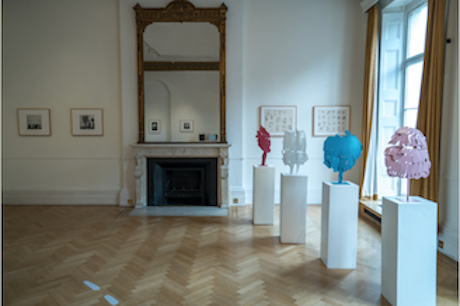June 29 - September 8 2017
The Italian Cultural Institute London
Introduced by Hans Urlich Obrist, director of Serpentine Galleries, the exhibition “Ties/Legami. Pietro Consagra and Ugo Mulas” has opened in London. This exhibition takes inspiration from sculptor Pietro Consagra’s and photographer Ugo Mulas’ lifelong friendship and professional partnership, inviting the visitor to consider the variety and uniqueness of certain relationships occurring in the world of art. Their friendship led to the publication of ‘Fotografare l’Arte’ (Photographing Art), an important work for discovering correlations within different fields, such as photography and sculpture. In his introduction to their book, Umberto Eco states: “In the sculptor’s love for his photographer there is also this acknowledgement of a renounced theft, of gratitude for not subtracting an interlocutor.” Indeed, by being an indexical medium, photography was well in tune with Consagra’s desire to encourage a more direct relationship between sculpture and his audience. As Eco writes: “It is a trace, like the damp circle a glass leaves on the table, or a footprint in the sand. In the absence of the object it tells us that there where the sign is, there had existed an object as source of luminous rays.” Ugo Mulas’ photographs of Consagra bring to life the sculptor’s artworks in progress, his movements at work in the Rome studio, the works shown at the Venice Biennale and in New York, granting us intimate insight into the sculptor’s creative process: from ideation to creation and, finally, to installation. They also underscore the ongoing relationship that Consagra established with the spectator, whom he considered an active protagonist, for example in the crossing of Trama, a seven element installation set up at the entrance to the Italian Pavilion at the 1972 Venice Biennale. The photos shot during construction in the studio and the final setting up in Venice are on show in London, together with the maquette (in the same painted wood as the large scale installation) and the practicable plan, in 1:1 scale, of the itinerary within the work. Other photos by Mulas bear witness to a further indissoluble relationship characteristic of Consagra’s artistic process: the relationship between a sculpture and its drawing. In fact all of Consagra’s sculptures grew out of a drawing, selected among many, and this inseparable bond was underlined by the artist: “I like a drawing alive like the strength of a draughthorse: I like the phase of shifting towards the myth of the finite, which daunts and attracts me. My sculpture is bound to drawing in order to remain with the possibility of turning back”. And in the exhibition we may compare several of Consagra’s minuscule India ink sketches with the sculptures created from them in 1966: sensitive works in iron, painted fuchsia, white, turquoise and pink.

